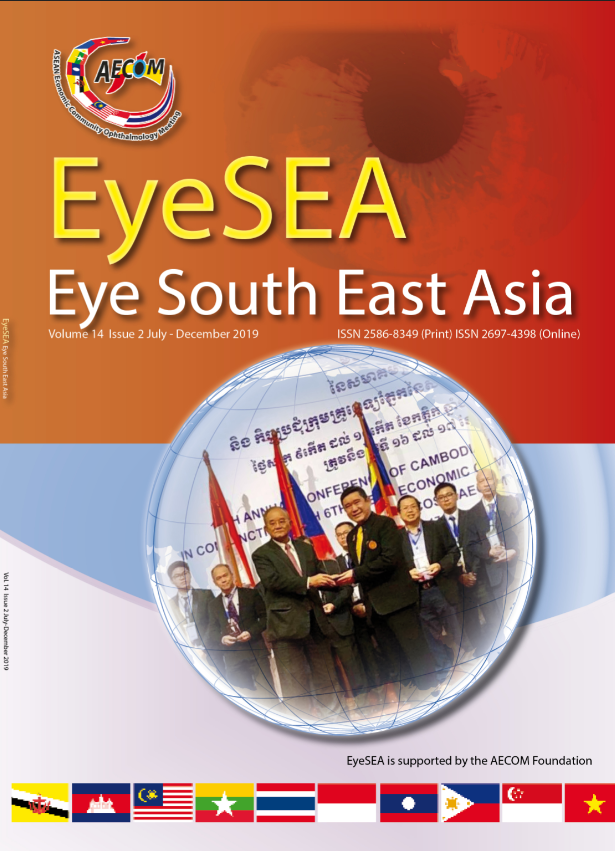Ocular bungee cord trauma: clinical characteristics and treatment outcomes
Main Article Content
Abstract
BACKGROUND: The utility of bungee cord is still common in our society, resulting in ocular trauma related to this tool, sometimes very complicated. Literatures about this kind of trauma are still few, mostly case report; therefore a more detail study of bungee cord ocular trauma is essential.
OBJECTIVES: To describe clinical features and treatment outcomes of ocular trauma associated with bungee cord injuries.
METHODS: Prospective case series. One hundred cases of bungee cord-associated ocular trauma who underwent in-patient and out-patient treatment at Cosmetic – Neuro-Ophthalmology Department, Ho Chi Minh city Eye hospital from March 2018 to December 2018 were enrolled in this study. Baseline visual acuity and intraocular pressure, anterior segment, posterior segment and periorbital injuries and surgical intervention were recorded. Follow-up period was 6 months.
RESULTS: Most of patients had hand movement and light perception visual acuity (44%). The most common anterior, posterior and periorbital injuries were hyphema (79%), vitreous hemorrhage (40%) and eyelid edema/ecchymosis (61%). Fifty-one percent underwent surgical intervention, with the most common surgery being corneal-scleral reconstruction (30%). Forty-five percent had visual acuity improved after treatment, while 30% of patients remained counting finger to no light perception
CONCLUSION: Bungee cord may cause a varied spectrum of injuries, with low baseline visual acuity and bad prognosis. A modification in the design of these cords, as well as an appropriate printed warnings to the users regarding the potential for severe ocular trauma and preventive strategy, is therefore necessary.
Keywords: bungee cord, ocular trauma, clinical characteristics, treatment outcomes.
Article Details
References
2. Brouzas, D., A. Charakidas, D. Papagiannakopoulos, and P. Koukoulomatis. "Elastic cord-induced ocular injuries." Injury 34, no. 5 (2003): 323-326.
3. Cooney, Michael J., and Dante J. Pieramici. "Eye injuries caused by bungee cords." Ophthalmology 104, no. 10 (1997): 1644-1647.
4. Chaudhry, Nauman A., Harry W. Flynn, and Paul F. Palmberg. "Elastic cord-induced cyclodialysis cleft and hypotony maculopathy." Ophthalmic Surgery, Lasers and Imaging Retina 30, no. 8 (1999): 678-680.
5. Chorich III, Louis J., Frederick H. Davidorf, Robert B. Chambers, and Paul A. Weber. "Bungee cord-associated ocular injuries." American journal of ophthalmology 125, no. 2 (1998): 270-272.
6. Gray, Ronald H., M. J. Menage, S. D. Cook, and J. Harcourt. "Eye injuries caused by elasticated straps." British medical journal (Clinical research ed.) 296, no. 6629 (1988): 1097.
7. Hollander, David A., and Anthony J. Aldave. "Ocular bungee cord injuries." Current opinion in ophthalmology 13, no. 3 (2002): 167-170.
8. Litoff, David, and Robert A. Catalano. "Ocular injuries caused by elastic cords." Archives of Ophthalmology 109, no. 11 (1991): 1490-1491.
9. Nichols, Carter J., H. Culver Boldt, William F. Mieler, Dennis P. Han, and Karl Olsn. "Ocular injuries caused by elastic cords." Archives of ophthalmology 109, no. 3 (1991): 371-372.


